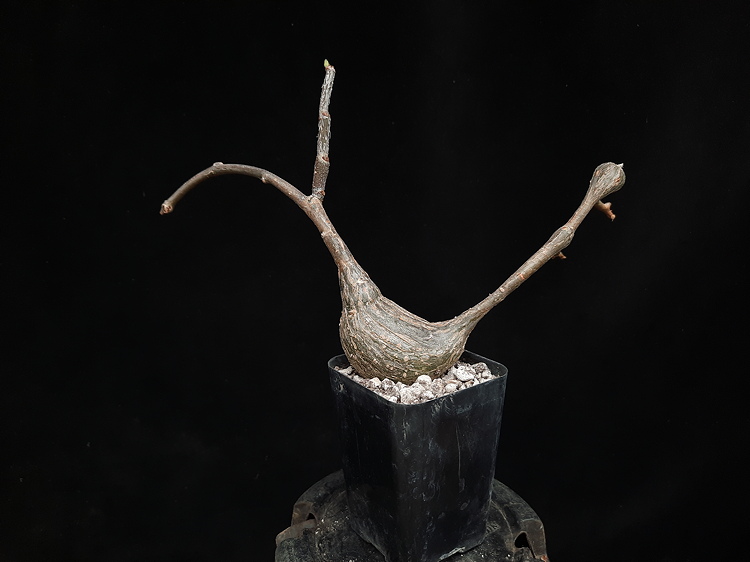This is a new name for an old collection of a familiar species but with a difference. This clone has the palmately lobed leaves of the species, but they are more glaucous than typical. Most collectors will know this as Cissus tuberosa but the name C. tiliacea was published in 1822 for the species a couple of years prior to C. tuberosa (1824). Its leaves are produced on vines that climb with the aid of tendrils and emerge from thickened tuberous stems. At the end of a growing season, resources are translocated to sections of stem that thicken up and overwinter. As the thinner vines at each end dry up and wither away, these heavier, thicker bits can fall to the ground to take root and thus distribute the plant as it slowly marches through the surrounding shrubbery. The thickened, sausage-like joints sometimes form adventitious roots. Rooted bits can take on evocative forms reminiscent of a bird or other animal. One can encourage these whimsical specimens by selectively pruning roots or stems. We offer rooted cuts of HBG 54688, collected by W. Baker (6178), B. Leachman, & M. Brewer, Oct 3, 1985: Mexico; Puebla; Rte 125, heading S from Tehuacan, on turnoff to San Luis Atolotitlan, 3.6 mi S of Zapotitlan, on cliff on W side of road, 6200’. $10.

Published in the Cactus and Succulent Journal, Vol. 96 (2), Summer 2024